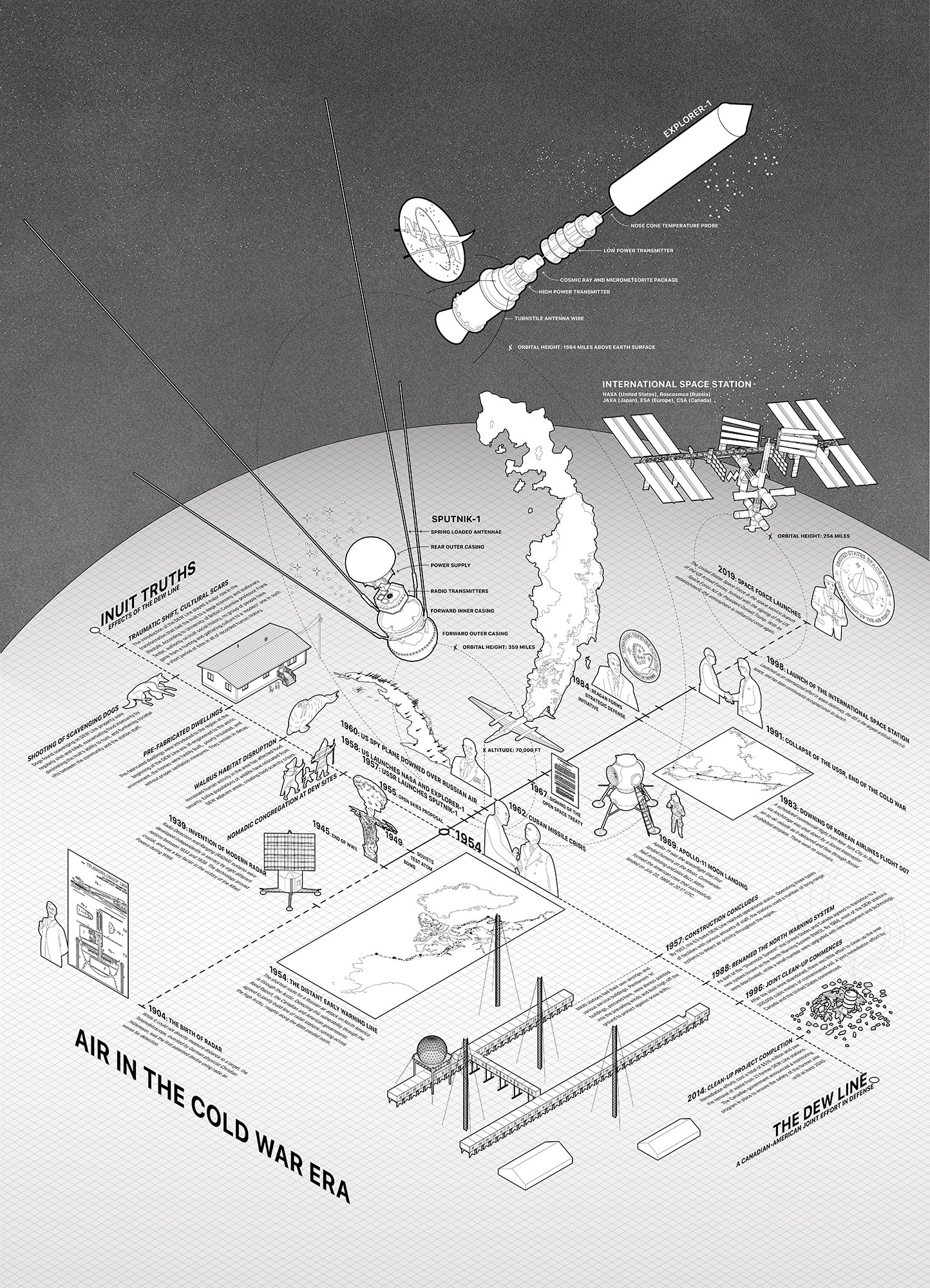Info︎

Air in the Cold War Era
The Arctic Circle
Fall 2020, Columbia GSAPPCollaborator: Audrey Marie Dandenault
Critic: Nahyun Hwang, NHDM
The Arctic context is historically one of power struggles between nations, a story of territorial expansion and domination. Weapons and infrastructure developed during the Cold War formalized air as a threat, and invented the concept of air sovereignty through the surveillance tactics and extra-terrestrial imperialism defined by the Space Race.
The Distant Early Warning Line (DEW line) is a series of radar stations across the arctic, conceived by Americans, with Canadian assistance, to detect enemy Soviet bombers during the Cold War. These sites, a direct manifestation of air as threat, were shut down in the 1980s as they were no longer technologically relevant, and many now sit vacant. The development of these facilities significantly impacted the lives of Inuit peoples in the region.
See the ensuing design proposal here
© Alek Tomich_ New York, NY